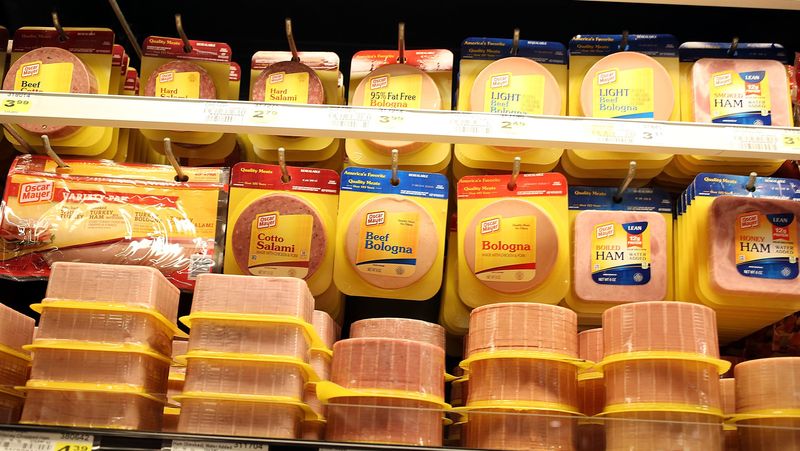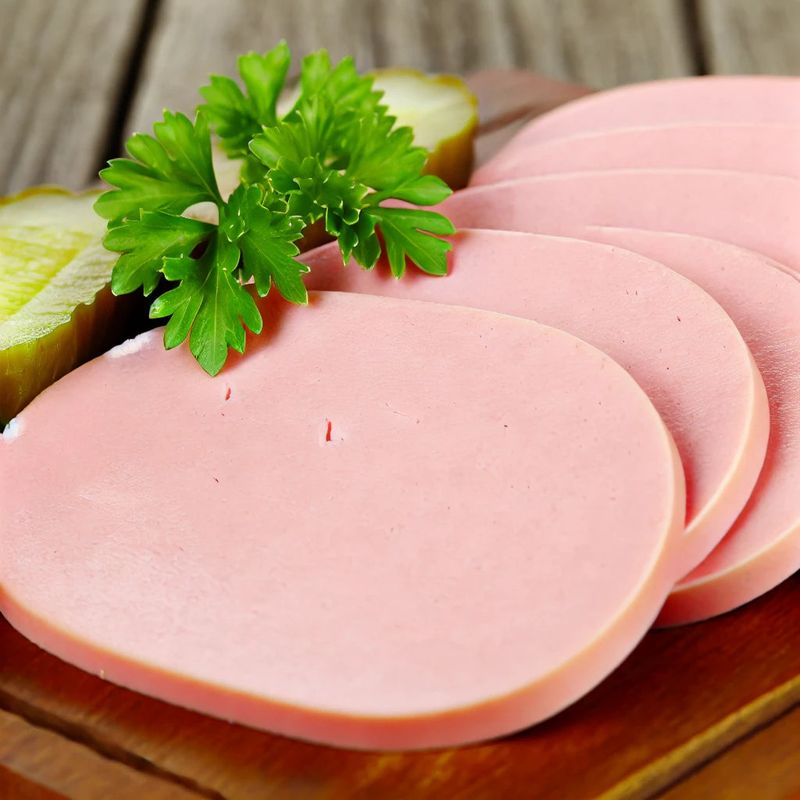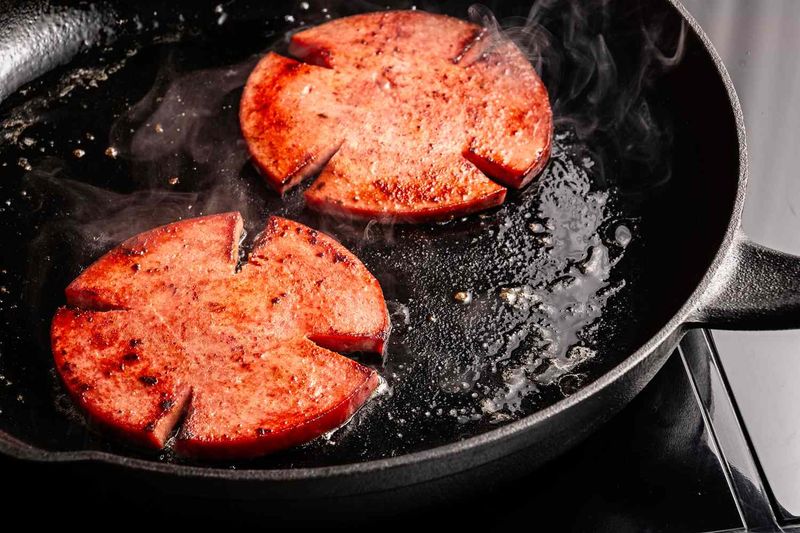Most people toss bologna into a sandwich without a second thought—but this classic lunch meat has a much richer story than you might expect. Wrapped in decades of myths, bologna has been dismissed, misunderstood, and mislabeled. From its true origins to what actually goes into it, there’s more to know than meets the eye. Like all processed deli meats, it’s best enjoyed in moderation. Whether you grew up on it or avoid it now, chances are you’ve believed a few falsehoods. These 13 eye-opening facts reveal what bologna really is—and what it definitely isn’t.
1. “Baloney” is NOT just a misspelling of “bologna”

Though they sound identical, “bologna” and “baloney” have taken different linguistic paths. “Bologna” refers to the meat product, derived from mortadella and named after the Italian city of Bologna. “Baloney,” on the other hand, became an Americanized pronunciation that took on a new life as slang for nonsense or lies. Over time, it embedded itself into everyday speech (“That’s a bunch of baloney!”) while the original spelling stuck with the lunch meat. So while they share phonetics, one belongs in a sandwich—and the other belongs in a heated argument.
2. Bologna isn’t a ‘mystery meat’ made from scraps

Despite its reputation, bologna isn’t a random mash-up of leftovers. It’s made from finely ground beef, pork, chicken, or turkey, and its production is closely regulated by the USDA. Manufacturers are required to clearly list ingredients, including any byproducts used. While lower-quality versions may include mechanically separated meat, many brands use clean, trimmed cuts from approved sources. Think of it as a smooth-textured sausage with roots in old-world recipes. Just like hot dogs or deli ham, bologna varies by quality—but it’s definitely not the untraceable meat mystery people make it out to be.
3. Bologna is NOT an American invention

It may be a lunchbox staple in the U.S., but bologna’s story started across the Atlantic. American bologna evolved from mortadella, a traditional Italian sausage that dates back centuries and hails from Bologna, Italy. Mortadella features visible cubes of pork fat and sometimes pistachios, while its American cousin is smoother and milder. Immigrants brought the recipe to the States, where it was adapted using available meats and spices. So while today’s bologna is uniquely American, its DNA is unmistakably Italian—making it not just a processed product, but a cultural evolution on a classic European original.
4. All bologna doesn’t taste the same

Flavor variety might not be the first thing you associate with bologna, but it’s more diverse than it gets credit for. From the tangy, smoky flavor of Lebanon bologna to the garlic-forward profile of German bologna, different regional styles bring their own personality to the plate.
Some are made with beef only, while others blend pork or turkey for a milder taste. Even spice blends, smoking methods, and texture can differ greatly. If you’ve only tried the basic store-brand slice, you’re missing out on the broader bologna universe with its surprising range of flavor experiences.
5. Bologna is NOT the same as mortadella

While the two meats are related, they’re far from interchangeable. Mortadella is an Italian delicacy with a coarser texture, visible chunks of pork fat, and often extras like pistachios or black pepper. Bologna, on the other hand, is a smooth, emulsified version inspired by mortadella but adapted to American tastes.
It’s blander by design and mass-produced for deli counters and lunchboxes. Their ingredients, processing methods, and flavor profiles differ widely. So no, grabbing bologna off the grocery shelf isn’t the same as savoring thin-sliced mortadella from an Italian butcher—though they do share a common ancestor.
6. If bologna changes color, maybe it’s not spoiled

Not all color changes are red flags. A slight graying or browning at the edges of bologna slices doesn’t automatically mean it’s unsafe to eat. Exposure to oxygen can alter the surface color of meats—just like it does with apples or avocados. As long as the bologna is within its expiration date, properly refrigerated, and doesn’t smell sour or feel slimy, it’s likely still fine. Use your senses—not just your eyes—to judge freshness. Spoiled meat is usually unmistakable, with a strong odor and unpleasant texture that go beyond a simple change in hue.
7. Bologna can be frozen

Freezing bologna is not only safe—it’s a smart way to reduce waste. Many people shy away from freezing it, worried it will become rubbery or dry. While texture can change slightly after thawing, especially if not properly wrapped, it remains completely usable and delicious. To keep it in good shape, wrap individual slices or sections in plastic wrap and place them in an airtight bag. Thawed bologna works well in sandwiches, casseroles, or pan-fried for crispy edges. So if you bought in bulk or can’t eat it in time, your freezer is a friend, not a foe.
8. Bologna is not that unhealthy, but should be eaten in moderation

Nutritionally speaking, bologna gets a bad rap—but context matters. Yes, it’s a processed meat, and some versions are high in sodium, fat, or preservatives. But not all bologna is created equal. Look for brands with cleaner ingredient lists, lower sodium, or leaner meats like turkey.
Like bacon, sausage, or deli ham, it’s best enjoyed in moderation as part of a balanced diet. Pair it with whole grains and veggies instead of white bread and mayo, and it becomes a flavorful protein source—not a dietary disaster. The key is mindful choices, not blanket rejection.
9. Bologna is NOT raw meat

It may look unassuming, but bologna is far from raw. Like hot dogs, it’s fully cooked—or sometimes smoked—before being packaged. The emulsified meat mixture is blended with spices, stuffed into casings, then heat-processed to a temperature that destroys harmful bacteria. That’s why it’s safe to eat cold straight from the fridge. No additional cooking is needed, though heating it up can enhance its flavor. If you’ve been avoiding it out of fear it’s raw, rest assured: bologna is ready to eat right out of the wrapper, no stovetop required.
10. All bologna doesn’t contain organ meats

It’s a common fear—but it’s not always accurate. While some bologna may contain organ meats like liver or heart, they must be clearly labeled by USDA rules. Many mainstream brands use only muscle cuts, ground finely for a uniform texture.
If you’re concerned about what’s inside, reading the ingredient list will tell you exactly what you’re eating. Premium brands tend to avoid byproducts altogether. In short, organ meats aren’t a guaranteed part of the package. If the idea bothers you, rest assured there are plenty of clean-label bolognas that don’t go beyond the basics.
11. Bologna is NOT made from horse meat

This myth refuses to die, but let’s be clear: horse meat has no place in standard American bologna. The USDA tightly regulates what goes into processed meats, and bologna must be made from clearly labeled sources like beef, pork, chicken, or turkey.
If a product contained horse meat, it would legally have to say so—and it doesn’t. The rumor likely stems from old-school urban legends or rare cases in international markets, not anything you’d find in your local grocery store. Rest easy: the bologna on your sandwich is horse-free and regulated for safety.
12. Bologna doesn’t have to be eaten cold

There’s no rulebook that says bologna has to be slapped cold onto bread. In fact, heating it can unlock deeper, richer flavors. Frying bologna creates crispy edges and a warm, savory bite that’s surprisingly satisfying—especially on toast with a fried egg.
The fat in bologna responds well to heat, caramelizing slightly and adding dimension you won’t get straight from the fridge. If you’ve only eaten it cold, try giving it a quick sizzle—you might be surprised by how gourmet it suddenly tastes.
13. Bologna is NOT only used in sandwiches

Ending with perhaps the most limiting assumption—bologna is far more versatile than people think. While it’s earned fame in sandwiches, that’s just the beginning. Fry it for a crispy breakfast side, dice it into pasta salads, stack it on pizzas, or cut it into cubes for a bold twist on charcuterie.
Creative cooks even turn it into bologna “chips” in the oven or wrap it around cheese for low-carb snacks. Its savory flavor and smooth texture make it an easy stand-in for ham or salami in countless recipes. Sandwiches are great—but they’re just one chapter in bologna’s playbook.
Leave a comment